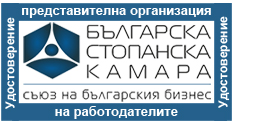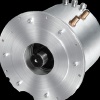Индустриален клъстер "Електромобили" - Учредители:








 |

|

|
| Актуално | За клъстера | Екип | Членове | Документи | Анализи | Услуги | Стани член | Награди | ССЕМ | Контакти |
ИКЕМ - Индустриален клъстер "Електромобили" | Събота, 26.04.2025 | |
|
PLUG-IN HYBRID ELECTRIC VEHICLE RESEARCH ROADMAP
The State of California has committed to ascertaining if and how plug‐in hybrid electric vehicles can help reduce greenhouse gas emissions and oil consumption by California’s fleet of 26 million vehicles. Moreover, California has shown interest in whether plug‐in hybrid electric vehicles might also improve the operation of California’s electric grid through recharging their batteries from the electric grid at night, when power demand is low. There are several ways in which plug‐in hybrids and other battery‐powered vehicles could be a strategic component of the future power system in California within the contexts of demand management, needed technical improvements to the grid, “smart grid” technologies, and increased renewable sources. Recently adopted policies are the primary drivers of plug‐in hybrid electric vehicles in California. The most important are the Global Warming Solutions Act (Assembly Bill 32, Nùñez, Chapter 488, Statutes of 2006); the State Alternative Fuels Plan (Assembly Bill 1007, Pavley, Chapter 371, Statutes of 2005); and Assembly Bill 118 (Nùñez, Chapter 750, Statutes of 2007) —which created the Alternative and Renewable Fuel and Vehicle Technology Program and the Air Quality Improvement Program. Also, the California Public Utilities Code Section 740.3 encourages development and implementation of electric transportation as part of a business model for California investor‐owned utilities. Moreover, the federal government, under President Obama’s leadership, has recently made dramatic shifts in its policies to move toward the electrification of transportation. Together these measures initiate, and to some degree frame, a plug‐in hybrid electric vehicle research and deployment process for the state. The commercial deployment of plug‐in hybrids is expected to happen over the course of the next decade. This process will be complex, with many steps that involve significant research. Many of these challenges are being taken up by industry, but there are important research opportunities for the State of California to shape and accelerate the deployment. Given its past leadership in controlling vehicle emissions, its important role as a major automotive market, and innovations in the electrical sector, California lead in developing research that bridges the automotive and power sectors. These research needs and opportunities arise from the unique technical, cost, and behavioral variability presented by a dual‐fueled, combustion, and battery‐powered vehicle; the technical and systemic challenges, impacts, and opportunities that come with integrating battery‐powered vehicles with the state’s electrical system; and calculating the benefits of plug‐in hybrids to California.
The Plug‐In Hybrid Electric Vehicle Research Roadmap provides a way for California to find out if and how plug‐in hybrid electric vehicles can help it reach its energy and environmental goals. This strategy was developed through research and consultation with many California stakeholders. Plug‐in hybrid electric vehicle research opportunities are divided into six research topic areas: •Plug‐in hybrid batteries •Plug‐in hybrid infrastructure impacts •Plug‐in hybrid consumer behaviors •Plug‐in hybrid codes and standards •Plug‐in hybrid environmental benefits and lifetime costs. |
Продукти 
Комплектна система за задвижване на електромобилиСистемата за електрозадвижване обхваща гама с три основни типоразмера на ел. мощност със съответните компоненти - електромотор и контролер. oще ...Виж всички продуктиАнкета с продължение...
|
|
|
 ЕВРОПЕЙСКИ СЪЮЗ Европейски фонд за регионално развитие Инвестираме във вашето бъдеще |
 |
 ОПЕРАТИВНА ПРОГРАМА „Развитие на конкурентоспособността на българската икономика” 2007-2013 www.opcompetitiveness.bg |
|
Интернет страницата е създадена с финансовата подкрепа на ЕФРР, в рамките на проект „Развитие на Индустриален Клъстер Електромобили” по ДБФП К-02-2/28.09.2011 г. |
|||